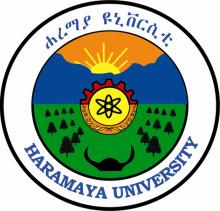Resource information
This study was undertaken in the crop and livestock production system interactions of smallholders upon fixed and fragmented land holdings in livestock and human populated area of Alaba, Southern Ethiopia with the objective of quantifying the major feed resources and evaluating the efficiency of utilizations of these feeds. General linear model (GLM) was fitted for dry matter yield of private grazing lands of the household in tonnes over covariates household grazing land size and number of households’ livestock in TLU for each type of livestock’s. Models were fitted for crop residues dry matter yield and aftermaths of the households including utilization efficiency and all were significant. Average family size of the households was 8.52 with literacy of the households’ leaders’ value of 52.5 % for the Woreda overall. Mean holdings of total lands did not vary between the two farming systems significantly (P > 0.05) but land use systems varied between the two study sites significantly (P <0.05) except for forest and wood land which was non-significant (P> 0.05) with Pepper / Wheat /Livestock farming system having higher values than Teff / Haricot bean /Livestock system. Similarly, livestock holding in tropical livestock unit ( TLU) and total dry matter (DM) productions of feed resources were significantly different between the two study sites (P < 0.05) except for poultry which was non-significant (P >0.05) and the major sources of feeds for livestock near to 78 % are obtained from crop residues followed by grazing lands. In this regard rate of cultivation of lands is far great for Teff / Haricot Bean /Livestock system and significant differences of crop residues yield was observed between the two study sites (P<0.05) . Results are based on 114 sample households’ surveyed in the two great strata of the Woreda called farming systems at two seasons which varied mainly on the types of commodities they produce and species of animals’ dominance. The results of the models showed that the following variables with the corresponding P-value in the bracket were found to have a significant effect over the dependent variable dry matter yield of grazing land, household grazing land size in hectar (< 0.0001), numbers of household livestock in TLU for horse (0.03), mature female donkey (0.04), and for dairy cows (0.07). Livestock feed balance in terms of dry matter yield showed that a total of 1,224.6 tonnes of dry matter are produced for a total TLU values of 1,128.2 making their ratio to 1.09 but in actuality 3,178 tonnes of dry matter is required for the surveyed existing stocks regardless of the nutritional content of the dry matter. Quantification estimate clearly showed that the time of abundant feeds availability in the Woreda is only five months. Seasonal variation of feed is high and efficient utilizations of what is produced is still quite less than 65% because of non-storage of crop residues during crop harvest, wastage by trampling and lack of improvement of the quality of the feed. Plots of, private grazing lands in front of homestead are usually the main sources of feeds for livestock, during cultivation and hence is over grazed. Nearly, 64 % of the surveyed households have problems of shortages of water and travel from half- a day during dry period. High production of crop residues dry matter that make the two systems complement to one another, locally available sodic soil of the area called bole in addition to better livestock market out let is an existing opportunity. Forage development is a key to skip feed shortages if practiced but it is at an infant stage in terms of usage in the study areas and the main reasons of which are highly attributed to shortage of land, seed and knowledge gap. Interventions to utilize locally available potential feeds, better access to forage and fodder development, water development and quality improvement of straws are optioned as a way out to profit from the livestock sector in the study areas. Nevertheless, these are not only enough unless backed up institutionally as a strategy for consistent and persistent monitoring.



